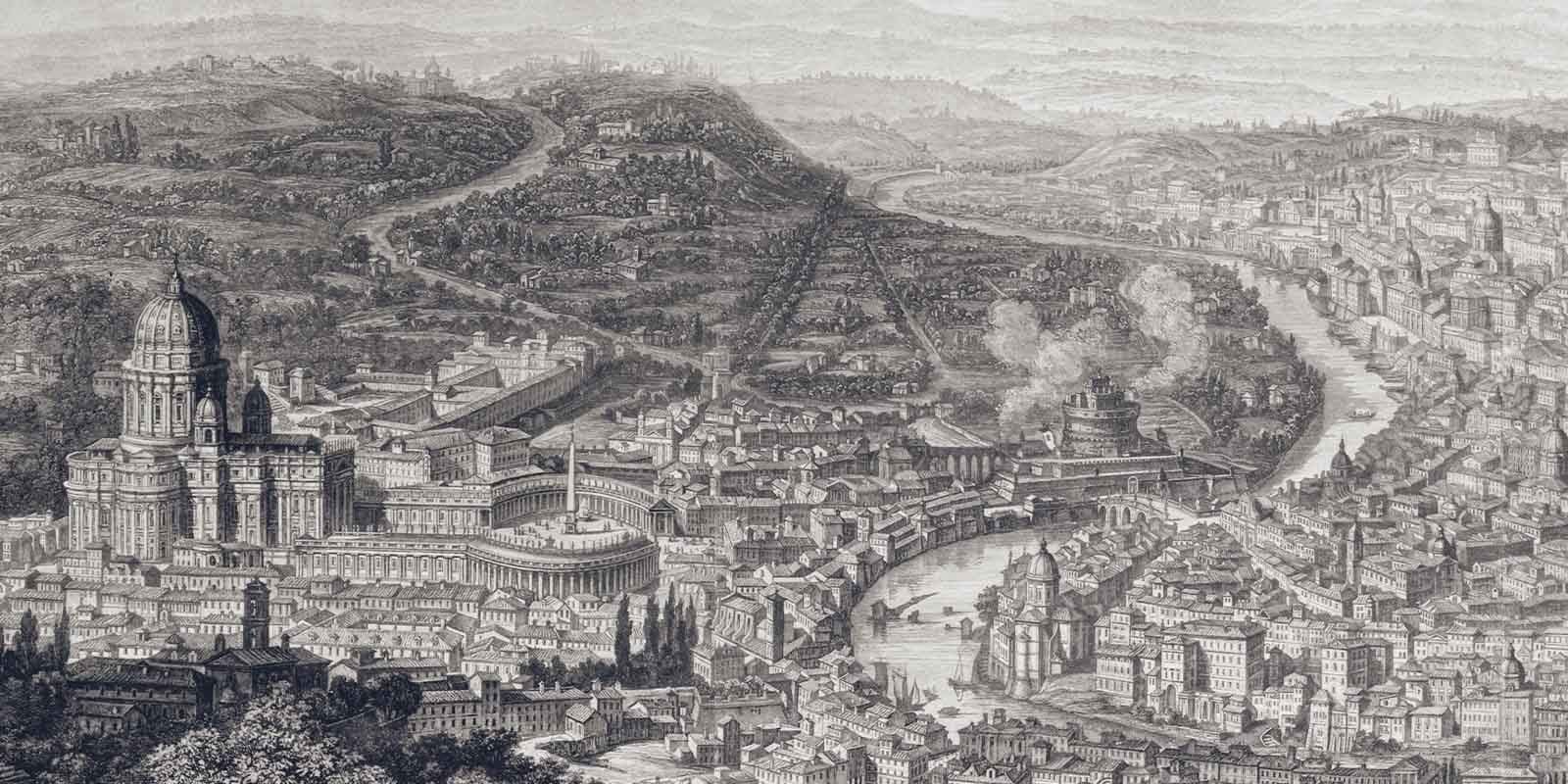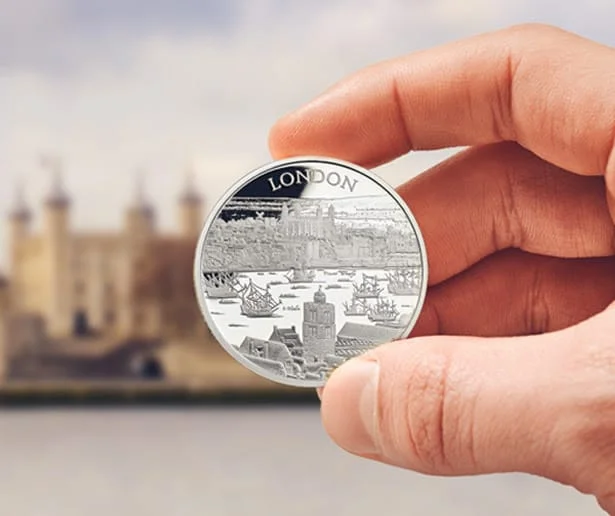City Views of Rome

The Royal Mint coin series dedicated to City Views continues its journey worldwide with Rome. The City Views of London coins are already released.
The heart of a once mighty empire that reached as far as British shores, its influence on the United Kingdom remains in the form of architecture, art, and feats of engineering.
Once a key destination on the Grand Tour, a rite of passage for young British aristocrats looking to expand their cultural education, modern tourists follow their example and enjoy Rome’s famous fountains, classical monuments, and ornate piazzas.
Available in a range of gold and silver editions, the coin’s reverse design is based on Aspect général de Rome by Jacques Alphonse Testard, skilfully recreated in miniature.
Showing the city as seen from atop the Janiculum Hill in the nineteenth century, it beautifully captures the panoramic sweep of one of the world’s most iconic skylines.
City Views : Rome Coins
The main dome of St Peter’s Basilica, taken from a section of Testard’s sketch, dominates the reverse of the coin. Built on the tomb of Saint Peter, one of Jesus’ twelve disciples, the basilica is one of the most renowned examples of Renaissance architecture and features artistic treasures such as Michelango’s Pietà.
This intensely holy place is a major pilgrimage site, with the Vatican grottoes below the basilica holding the remains of numerous popes and saints.
Adjoining the basilica is St Peter’s Square, which can hold more than 300,000 people, and is one of the most famous and beautiful squares in the world. Drawing huge crowds, the Pope regularly leads liturgies in both the basilica and the square.
The task of recreating this cityscape in miniature fell to The Royal Mint’s Product Design team. Capturing so much tiny detail on a coin presented a huge challenge, as Product Designer Dan Thorne explains:
“The most important thing for me while modelling such an intricate design was to capture as much detail as possible.
The challenge here was to create a relief that preserved as much of the charm of the original engraving while still being readable on a much smaller scale.
This prompted us to pursue new ways of thinking, creating methods and techniques that have not been used before.”
